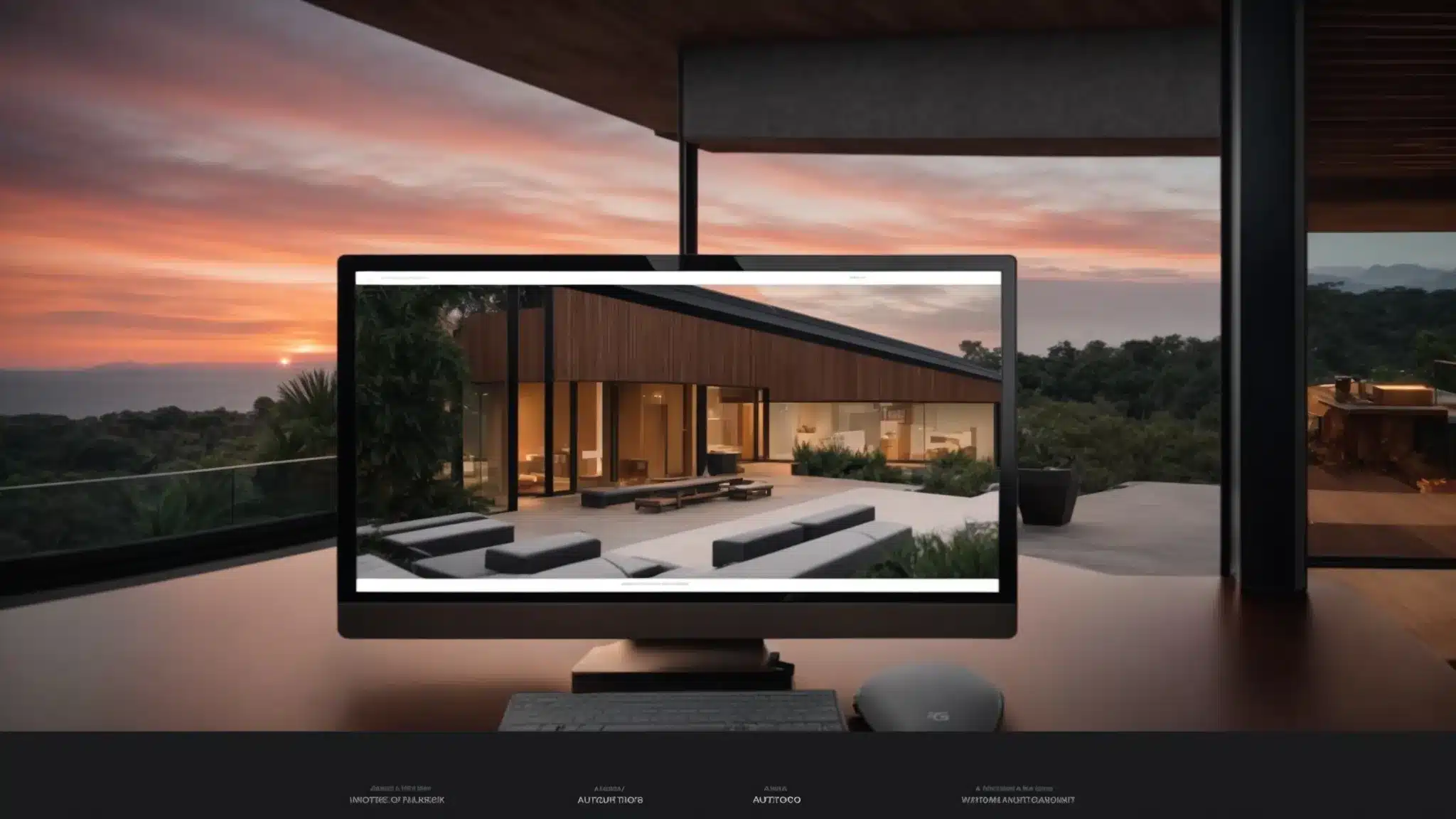Optimizing User Experience Design for Therapist Websites: A Comprehensive Guide
Are you struggling to connect with your patients online? Statistics show that 88% of users are less likely to return to a website after a bad experience. In this guide, we will explore essential elements of optimizing user experience design for therapist websites, including enhancing accessibility, creating an intuitive interface, and applying psychological principles to better engage users. By implementing these strategies, you can strengthen your brand, improve patient interactions, and establish yourself as an expert in behavioral therapy. Join us as we tackle the common pain points that prevent potential clients from finding the support they need.
Understanding User Experience in Therapy Websites

Understanding user experience (UX) in therapy websites is crucial for enhancing client engagement. We will explore how a seamless UX meets the needs of prospective clients and fosters trust and credibility online. This includes practical insights on integrating concepts like gamification and effective strategies for search engine optimization. Additionally, we’ll discuss the importance of collecting email addresses to build lasting client relationships.
The Impact of UX on Client Engagement
The impact of user experience (UX) on client engagement in psychotherapy websites cannot be overstated. We understand that factors such as website layout, navigation simplicity, and loading speed significantly affect a potential client‘s perception of your services. By optimizing these elements, therapists can create a more inviting online presence that fosters trust, making users more likely to explore the site and eventually seek therapy.
- Website layout and design basics.
- Navigation simplicity for better accessibility.
- Importance of fast loading times.
- Trust-building elements within therapy websites.
Recognizing the Needs of Prospective Clients
Recognizing the needs of prospective clients is pivotal in enhancing user experience design for therapist websites. Our aim is to build confidence by ensuring clients feel secure when sharing personal data, which is often a barrier to engaging with therapeutic services. By applying design thinking principles, we create a website that resonates with their cognition, guiding them comfortably through the process of reaching out for help.
- Understanding the importance of client security.
- Creating a welcoming and informative design.
- Addressing common client concerns.
- Implementing features that encourage interaction.
How UX Builds Trust and Credibility Online
When it comes to building trust and credibility online, the user experience (UX) of therapy websites plays a vital role. By applying principles from cognitive psychology, we can enhance usability, making it easier for clients to navigate your site and find the information they need about your services as a mental health counselor. Additionally, clear policies regarding privacy and data security can provide reassurances to potential clients, encouraging them to engage with your practice with confidence.
| UX Element | Description | Impact on Trust |
|---|---|---|
| Website Design | A clean, professional layout that aligns with industry standards. | Creates a sense of professionalism and reliability. |
| Navigation | Simplified menus and accessible content. | Facilitates user engagement and reduces frustration. |
| Loading Speed | Fast loading times for all pages. | Minimizes bounce rates and retains visitor interest. |
| Security Policies | Clear communication of data protection measures. | Reassures clients about the safety of their personal information. |
Planning for Optimal User Interaction

Defining clear goals for your therapy website is the first step toward optimizing user experience and fostering compassion for prospective clients. Understanding the online behavior of your target audience enables us to craft effective calls to action. We will also discuss mapping the user journey effectively, a concept influenced by Don Norman‘s principles, to enhance engagement and ultimately guide clients toward seeking therapy.
Defining Clear Goals for Your Website
Defining clear goals for your therapy website is essential in optimizing user experience and ensuring that visitors engage meaningfully. We aim to capture attention by focusing on emotional design, acknowledging the bias that can arise from a poorly defined purpose. By clarifying our goals, we not only enhance users’ overall feeling of security and confidence but also increase the chances of turning visitors into clients.
- Identify your target audience and their specific needs.
- Set measurable objectives for client engagement.
- Incorporate emotional design elements to resonate with users.
- Utilize clear calls-to-action that guide user behavior.
Identifying the Online Behavior of Your Target Audience
Understanding the online behavior of your target audience is essential for effective interaction design on your therapist website. By analyzing how potential clients search for mental health services, we can tailor our approach to meet their specific needs. For instance, if we notice that clients frequently look for resources related to anxiety management, we can create informative content and resources on our clinic’s site that directly address these concerns, thus enhancing their overall experience and encouraging engagement with our services as health professionals.
Mapping the User Journey Effectively
Mapping the user journey effectively is vital for therapists aiming to enhance user experience on their websites. By closely analyzing the steps prospective clients take, we can identify key touchpoints where confidentiality concerns may arise and provide clear information that reassures visitors about their safety. This approach not only showcases our knowledge in crafting intuitive designs but also reflects our commitment to innovation in user experience, ultimately guiding potential clients toward engaging with our therapeutic services with confidence.
Designing an Intuitive Interface

Designing an Intuitive Interface
Creating a user-friendly interface is vital for therapist websites, as it directly impacts client engagement. We will focus on four key aspects: establishing simple and logical navigation that promotes ease of use, selecting colors and fonts that resonate with your practice’s identity, implementing responsive web design for optimal viewing on all devices, and utilizing visual elements to enhance understanding and retention of information in the mind of your clients.
These approaches not only enhance graphic design but also ensure that every element serves a purpose. By prioritizing these strategies, we can create a cohesive web design that connects effectively with potential clients.
Creating Simple and Logical Navigation
Creating simple and logical navigation is a fundamental aspect of effective therapy website design. We utilize a methodology that prioritizes user experience by ensuring menus are intuitive and clearly labeled, which enhances usability. We also recommend conducting usability testing based on thorough research to identify potential pain points in the navigation process, allowing therapists to design an interface that facilitates easy access to important information without overwhelming prospective clients.
- Prioritize intuitive and clearly labeled menus.
- Conduct usability testing to identify pain points.
- Ensure easy access to important information.
- Aim to avoid overwhelming visitors with too many options.
Choosing Colors and Fonts That Reflect Your Practice
Choosing the right colors and fonts for your therapy website is essential in conveying credibility and empathy. Colors like calming blues and greens can evoke a sense of peace, aligning with the mental health focus of your practice, while fonts that are clear and easy to read enhance motivation for visitors seeking help. By thoughtfully selecting design elements that reflect the sensitivity of mental health issues, you can create an inviting atmosphere that speaks to the needs of clients facing difficult emotional challenges or disease.
- Use calming color palettes to promote a sense of peace.
- Select clear, accessible fonts to enhance readability.
- Align design choices with the emotional support you offer.
- Create an inviting atmosphere to mitigate client apprehension.
Implementing Responsive Design for All Devices
Implementing responsive design for all devices is essential for therapists aiming to optimize user experience on their websites. In our experience, a responsive system ensures that potential clients have consistent access to information regardless of whether they are using a smartphone, tablet, or desktop. This capability minimizes user frustration and pain, as visitors can easily navigate your site and engage with content tailored to their emotional needs. By optimizing for various screen sizes, we can address the common hurdles clients face when seeking help, ultimately fostering a welcoming atmosphere that encourages them to reach out.
- Ensure compatibility across all devices for user engagement.
- Reduce user pain by minimizing navigation frustrations.
- Create an emotionally supportive online experience.
- Encourage clients to easily access therapy information anytime.
Utilizing Visual Elements to Enhance Understanding
Utilizing visual elements in therapist website design is essential for enhancing user understanding and navigation. By incorporating images and infographics, we can simplify complex information, allowing clients to grasp concepts related to therapy easily. Following principles derived from behavioral studies and the scientific method, we can ensure that the visuals effectively resonate with users, reducing confusion and guiding them toward your services, much like the clarity provided in a clinical trial.
Enhancing Accessibility and Usability

Ensuring your therapist website is accessible and user-friendly is essential for reaching your target audience effectively. We will explore compliance with accessibility standards, simplifying contact forms and appointment scheduling, and crafting clear, compassionate content. Additionally, we’ll discuss the importance of optimizing load times to retain potential clients while enhancing navigation and overall user experience.
Ensuring Compliance With Accessibility Standards
Ensuring compliance with accessibility standards is a vital aspect of effective therapy website design. We recognize that clients seeking occupational therapy may face barriers that can hinder their access to vital resources and services. By eliminating jargon and simplifying web page structures, we make it easier for all users to navigate the site, ultimately enhancing their experience and engagement. Our commitment to creativity in design also involves using contrasting colors, alternative text for images, and keyboard navigation options that not only comply with accessibility guidelines but also foster inclusivity for diverse client needs.
Simplifying Contact Forms and Appointment Scheduling
Simplifying contact forms and appointment scheduling is a crucial aspect of user experience design on therapist websites. We focus on creating intuitive forms that align with the mental model of clients seeking counseling, ensuring that they can easily share their information without unnecessary complications. By reducing the number of fields and utilizing clear, concise language, we enhance the digital journey for potential clients, making it straightforward for them to reach out and schedule their visits.
Writing Clear and Compassionate Content
Writing clear and compassionate content is essential for therapy practices, as it directly impacts how potential clients perceive your services. In my experience with web development for counselor websites, I have found that reducing cognitive load through simple language and inviting tones significantly improves user engagement. By providing easily digestible information, we can facilitate effective problem solving for visitors who may be feeling overwhelmed or confused about seeking help.
| Content Element | Purpose | Benefits |
|---|---|---|
| Clear Language | Minimize confusion | Enhances user understanding |
| Compassionate Tone | Build trust and rapport | Encourages client engagement |
| Accessible Information | Provide essential details | Supports decision-making |
| Step-by-Step Guidance | Facilitate navigation | Reduces cognitive load |
Optimizing Load Times for Better User Retention
Optimizing load times is crucial for retaining users on therapist websites. Research shows that slow-loading pages can lead to increased bounce rates, which means potential clients may leave before exploring your services. By utilizing web analytics, we can gain insight into user behavior and identify performance bottlenecks that impact loading speed, allowing us to address these issues to enhance the user experience. Implementing best practices in user interface design involves compressing images, minimizing code, and leveraging browser caching to ensure that your site runs smoothly and efficiently.
| Optimization Technique | Description | Impact on User Retention |
|---|---|---|
| Image Compression | Reducing the size of image files without sacrificing quality. | Faster loading times enhance user experience. |
| Code Minimization | Removing unnecessary characters in the code, such as whitespace. | Improves site speed and responsiveness. |
| Browser Caching | Storing certain website resources in a visitor’s browser. | Reduces load times for returning users. |
Applying Psychological Principles to UX Design

Applying Psychological Principles to UX Design
Leveraging cognitive psychology in user interaction enhances the effectiveness of therapist websites. We will explore how incorporating emotionally engaging elements can resonate with potential clients and create a welcoming atmosphere. Additionally, building trust through testimonials and social proof is vital for encouraging engagement. These strategies, supported by our Core Marketing System and analytics, are crucial for optimizing user experience.
Leveraging Cognitive Psychology in User Interaction
Leveraging cognitive psychology in user interaction is essential for creating effective therapy websites. By understanding how potential clients think and process information, we can design interfaces that align with their natural behaviors, enhancing their experience. For instance, incorporating familiar navigation patterns and clear visual hierarchies can reduce cognitive load and make it easier for users to find the information they need, ultimately guiding them toward taking the step to seek therapy. These thoughtful design elements not only foster trust but also enhance user engagement, addressing the common challenges faced by both clients and therapists in the digital landscape.
Incorporating Emotionally Engaging Elements
Incorporating emotionally engaging elements into therapist websites is essential for fostering a supportive environment and enhancing user experience. We understand that visuals, such as images that reflect warmth and understanding, can resonate deeply with potential clients, helping them to feel more at ease. Additionally, integrating testimonials and stories from past clients can provide social proof, reassuring visitors that they are not alone in their struggles and encouraging them to take the vital step of reaching out for help.
Building Trust Through Testimonials and Social Proof
Building trust through testimonials and social proof is crucial for enhancing user experience on therapist websites. When potential clients see real feedback from previous clients, it validates their decision to seek help and eases anxiety about the process. This can include displaying success stories, ratings, and detailed reviews to showcase the effectiveness of your services and create a supportive environment that encourages new visitors to take the important step of reaching out for assistance:
- Display authentic testimonials prominently on your website.
- Incorporate visual elements, such as client photos or videos, if possible.
- Regularly update feedback to reflect your ongoing commitment to client satisfaction.
Testing and Improving User Experience Continuously

Continuously optimizing user experience on therapist websites involves systematically gathering feedback from website visitors to understand their needs and preferences. We will discuss how to analyze user behavior with analytics tools, allowing us to gain valuable insights into site performance. With this data, we can make informed, data-driven enhancements to improve engagement and support potential clients effectively.
Gathering Feedback From Website Visitors
Gathering feedback from website visitors is essential for optimizing user experience design on therapist websites. We often utilize tools such as surveys, feedback forms, and heatmaps to capture client insights about their navigation and overall satisfaction. By actively listening to what potential clients are saying, we can identify areas for improvement and make informed design changes that enhance engagement and trust, ultimately encouraging more individuals to reach out for support.
Analyzing User Behavior With Analytics Tools
Analyzing user behavior with analytics tools is essential for understanding how potential clients interact with your therapist website. Tools like Google Analytics can provide insights into visitor demographics, pages viewed, and engagement duration, allowing us to identify popular content and areas needing improvement. By assessing this data, we can make informed decisions to enhance the user experience, ultimately guiding prospective clients through their journey more effectively:
- Utilize analytics tools for data collection and insights.
- Identify popular content and user navigation patterns.
- Make data-driven decisions to enhance user experience.
- Continuously iterate based on user behavior feedback.
Making Data-Driven Enhancements to Your Website
Making data-driven enhancements to your therapist website is essential for creating a user experience that meets the needs of potential clients. By analyzing analytics data, I’m able to identify which pages attract the most traffic and which elements may cause users to leave the site prematurely. Implementing these insights, such as adjusting content layout or improving call-to-action buttons, allows us to refine the user journey, ultimately driving higher engagement and helping prospective clients feel more comfortable reaching out for therapy services.
Conclusion
Optimizing user experience design for therapist websites is essential for enhancing client engagement and building trust. By focusing on intuitive navigation, emotionally resonant elements, and clear communication, therapists can create a welcoming online environment that encourages potential clients to reach out. Essential strategies such as responsive design, simplified contact forms, and utilizing analytics tools empower practitioners to continually refine their approach. Prioritizing these aspects not only boosts online visibility but also fosters lasting connections with clients seeking support.
